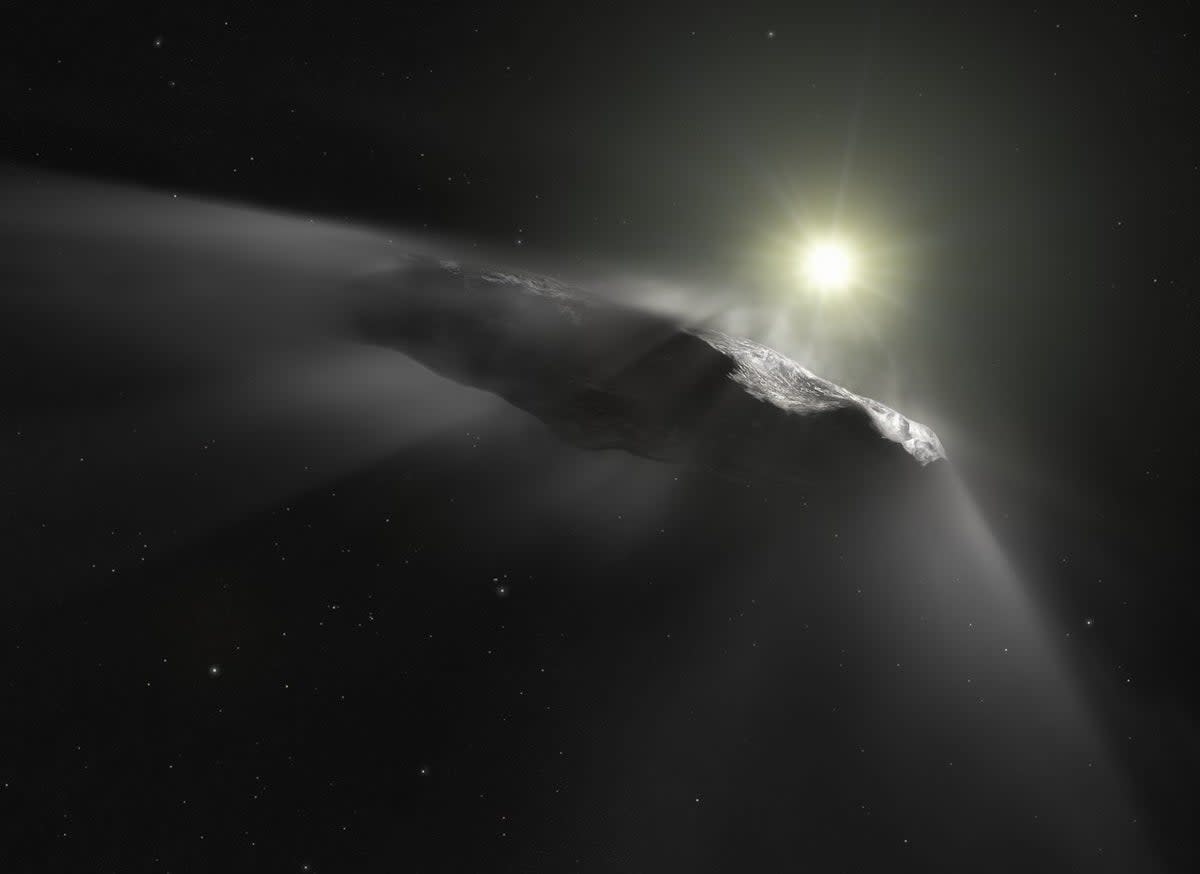Scientists find ‘surprising’ explanation for behaviour of Oumuamua comet, the first visitor from another solar system

Scientists think they have explained the unexpected behaviour of ‘Oumuamua, the first known comet to have visited us from another solar system.
The object arrived near us in 2017, and immediately became one of the most discussed comets in history. Though it was clear that it was the first known interstellar asteroid, its other details were a mystery, including why it had no tail like most comets or how it got its strange long shape and small size.
One particular mystery perplexed scientists: why it was accelerating away from the Sun. The unusual behaviour even led some to speculate that the object could have been an alien spacecraft, send to quietly probe our solar system.
The fact it did not have a tail and was so distant from the Sun suggested that it would struggle to eject enough water to move it in the way it was travelling. That led to a range of possible theories, including suggestions of an alien spacecraft, with scientists suggesting it could be powered by an engine or a light sail.
The explanation may in fact be startlingly simple, however. The path may just be the result of hydrogen coming out of the comet as it was warmed by the Sun.
Because the comet was so small, the tiny push from the gas spurting out of the ice in the object meant that its path was changed, the scientists suggest.
Scientists do not know exactly how big Oumuamua was, because it was too small and far away for telescopes to pick it up, but think that it was a long cigar-like object about 115 metres long and 19 meters wide. All comets observed in our solar system have range from 1 kilometre to hundreds of kilometres – meaning that our understanding of how they smaller ones might move is limited.
“What’s beautiful about Jenny’s idea is that it’s exactly what should happen to interstellar comets,” said Darryl Seligman, a colleague of Jennifer Bergner, the UC Berkeley assistant professor of chemistry who first proposed the theory. “We had all these stupid ideas, like hydrogen icebergs and other crazy things, and it’s just the most generic explanation.”
In an attempt to examine whether the explanation was accurate, Professor Bergner looked through research to see how molecular hydrogen might interact with comets. She found research – some of it 50 years old – that suggested it was possible for molecular hydrogen to be produced and trapped within the ice of a comet, sometimes deep inside.
Models show that process, and the force produced as hydrogen was shot out of the comet as a gas when it was warmed by the Sun, would be enough to push it and accelerate it on its journey through space.
In the years since, scientists have found six other comets that also have no observable coma or tail but are accelerating in an unexpected way. Such comets might therefore be commo, and while they might not all be explained by molecular hydrogen they do suggest that small bodies can push themselves around the solar system.
The findings are reported in a new paper, ‘Acceleration of 1I/‘Oumuamua from radiolytically produced H2 in H2O ice’, published in the journal Nature today.


